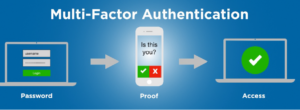The current snarl that is the Kansas Unemployment system — and the massive levels of fraud inflicted upon the state — were entirely avoidable according to Phil Hayes, vice president of HR firm The Arnold Group and chairman of the Kansas Employment Security Board of Review.
The incredibly outdated computer system and its failures are well known, but in a recent phone interview and webinar, Hayes detailed more than a year of Kansas Department of Labor not taking the problem seriously.
Chief among the problems that led to massive fraud was the lack of an identity verification system.
And no such system was implemented until late January of 2021 — fully eight months after it became clear fraud was going to be rampant.
 “Obviously the system is old and challenging, but at the end of the day, by the end of January we (Kansas) actually did apply a multi-factor authentication solution to our old technology,” Hayes said in a phone interview Thursday. “It’s hard to even imagine that we didn’t have some sort of ID verification piece.”
“Obviously the system is old and challenging, but at the end of the day, by the end of January we (Kansas) actually did apply a multi-factor authentication solution to our old technology,” Hayes said in a phone interview Thursday. “It’s hard to even imagine that we didn’t have some sort of ID verification piece.”
Indeed, the business community, according to Hayes, had seen the problem begin to develop by the end of March of 2020, and by June of last year was sounding the alarm to KDOL.
“In March, we’d seen some concerning or suspicious fraudulent claims developing,” Hayes said. “We went on record … in June, trying to explore the ability to put on some identity verification solutions. We were just told that it wasn’t ‘feasible’ or it ‘wouldn’t apply or stack onto the existing platform.'”
Hayes said the Kelly administration simply didn’t take the problem seriously — despite Kelly herself being a victim.
“The current administration … received ample warning notice, concerns, and there was time to act,” Hayes said. “It just felt like it wasn’t a priority because the solution that needed to be put in place was put in place eight months too late.”
And in fact, according to Hayes, just two days after testimony to the legislature showing the bill to the taxpayers for unemployment fraud could be as high as $371.6 million, the Kelly administration announced they were shutting down the system in order to apply the multi-factor authentication Kansas employers had been told was “not feasible” just months before.
“By the end of January, myself and Jeff Oswald with Unemployment Insurance Services go up (to Topeka) and we provide testimony … [and] he and I indicated that we felt Kansas had fraud exposure anywhere from $300 to $600 million. It was a pretty wide range but just based on the information we had at the time.
“And the Legislative Post Audit comes out and they were estimating $600 million; KDOL comes out and says that ‘we think it’s closer to $300 million.’
“It felt like there was some backlash ‘or there’s no way it can be that high,'” Hayes continued. “But it took throwing a large number out to get the attention because two days later is when Governor Kelly came out and put the brakes on the system.
“Two days later we’re taking the system down and that identity verification solution was put in place over a weekend that we’d been repeatedly told couldn’t be done.”
In point of fact, the average weekly regular UI benefit claims from Jan. 2, 2021, to Jan. 23, were more than $38 million. Just a month later from February 13 to March 6, the claims had dropped to roughly $6.5 million — an 83 percent reduction.
Too much ‘Can’t’ at KDOL, not enough ‘Can Do’
Indeed, Hayes said the human resources and business communities in Kansas were practically screaming there was an issue, and suggesting fixes and from the beginning — and were simply blown off.
“What’s most frustrating — again hindsight is 20/20 — looking back, and here it is July 1 (2021) now, 13 months ago we were saying, Can we not do some of these measures? The most critical being an ID verification or some sort of solution. And ‘no it can’t be done, no it can’t be done,’ we were told repeatedly.”
Moreover, multiple groups were seeking information about the extent of the fraud — from employers to media outlets like the Sentinel, to the Legislature itself — only to be told the data didn’t exist.
In late November, the Sentinel sent a Kansas Open Records Request asking for data. After nearly two weeks of back and forth, the Sentinel was told there were no records responsive to that request.
“I think that’s the frustration legislators shared throughout the session,” Hayes said. “They were asking for data and information and were told ‘we don’t have that’ or ‘we can’t get that.’
“Well who else owns that data? It houses under KDOL and for them to be able to say they can’t quantify it or they can’t provide an estimate … it just added that much more to the level of frustration because the legislators were getting hammered by claimants frustrated and disenfranchised by the system and the legislators were hitting the same roadblocks.”
Kansas #1 in identity theft in 2020
As of Dec. 7, 2020, KDOL reported more than 157,000 total fraudulent attempts and said they were stopping about 2,300 fraudulent claims or attempts daily, which adds up to massive fraud starting 70 days earlier.
Slide #17 in Hayes’ presentation shows Kansas had the largest increase in identity theft cases last year.
By way of comparison, Kansas with just under 3 million residents — has 0.89% of the national population, but accounted for 9.5% of initial claims in the week of January 23, 2021. California, with 12% of the national population had just 6.1% of the claims.



